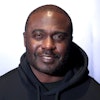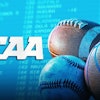While most will remember the 1997 National Collegiate Athletic
Association’s (NCAA) men’s basketball Final Four Tournament for the
University of Arizona’s improbable run to a national championship, the
most significant collegiate sports event of that particular weekend
occurred off the court.
Amid all the hoop hysteria, the National Association of Black
Coaches (NABC) called for a summit with high school coaches and the
National Basketball Association (NBA) to figure out how to emphasize
the importance of education and to keep high school and college
student-athletes from leaving school early to play professionally. The
coaches claim, correctly, that there needs to be a standard model for
providing young student-athletes advice and, at the core of that model,
there must be an emphasis on the importance of education.
“It’s time for high school coaches to play a more prominent role
like they used to,” says Mike Jarvis, head coach at George Washington
University.
“People aren’t talking to them earlier about the value of
education,” adds Duke University’s Mike Kryzyzewski (also known as
“Coach K”). “We would like to see more communication between the kid
and the coach.”
While Coach K is correct about the importance of education, it is
arguable whether a coach is the best person for student-athletes to
receive advice from about that particular topic – and whether college
coaches should talk about it at all.
Historically, college coaches have justified their existence by
claiming that they are educators. A coach’s classroom, it is said, is
the field or court – where the lessons taught in discipline, teamwork
and sportsmanship are as important as those learned in the chemistry
lab or English class.
But despite these high-minded claims that intercollegiate athletics
are about education, it is obvious that they are increasingly about
entertainment, money and winning. Student-athletes see coaches making
six figures from lucrative endorsements. They know that millions of
fans are watching them play on television. They pick up on the mixed
message sent when they are referred to as “players” and “athletes”
rather than “students” and “student-athletes.” And they note the
not-so-subtle messages that are articulated when they are steered to
less demanding majors, when NCAA rules are broken in recruiting, or
when games are scheduled at night for television audiences. High school
coaches see the same things.















